January 7, 2019 |
BITE: My Journal
Finishing School for the Unfinished
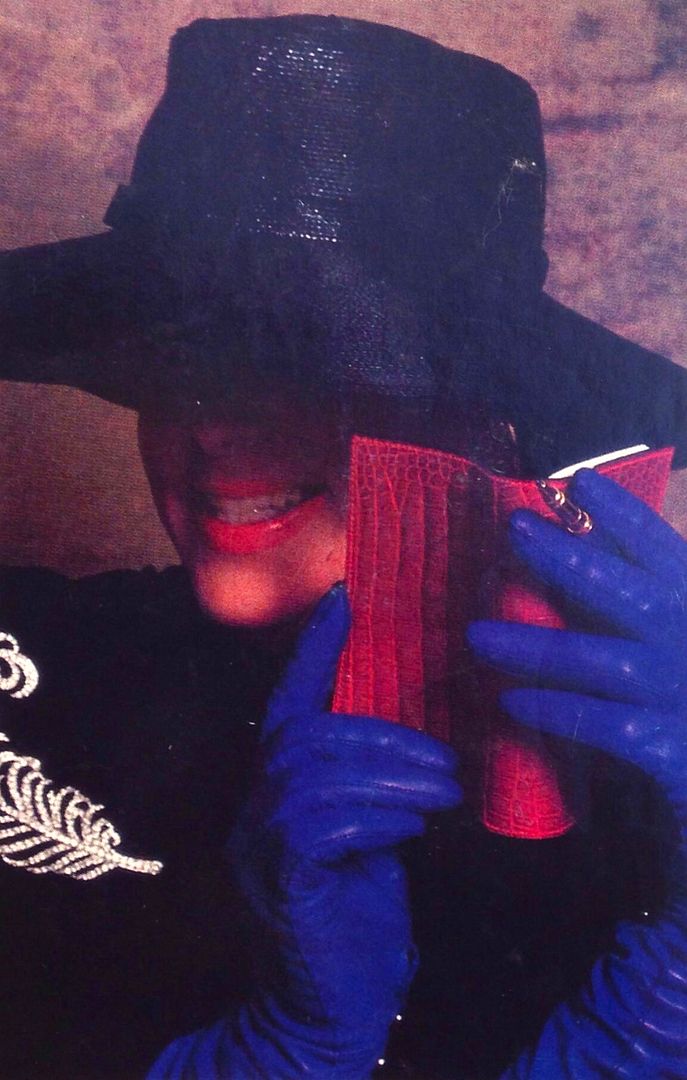
Alex Gottfried’s photo of me appeared on the cover of New York magazine with my first Ask Gael roundup.
I remember the years when some Americans thought an overcooked lamb chop and canned peas signaled dining well. But then came the revolution of sensuality in the Sixties. And that fed into America’s frenzied restaurant evolution.
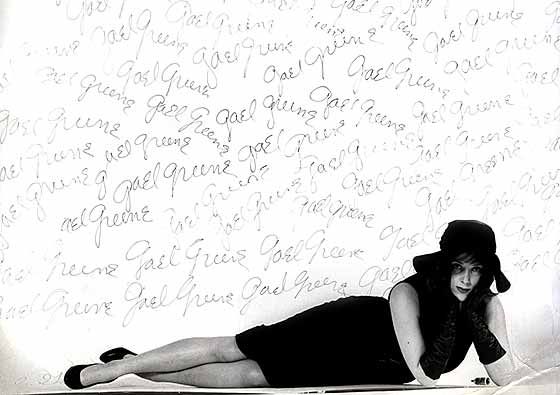
Helen Gurley Brown assigned me to write about what an author has to do to promote a new book.
Maybe you weren’t born yet in 1968, or perhaps you were still in your high chair dribbling mashed banana the year New York was launched. But I’d been a New York Post reporter, an ambitious cook, and a student of strudel with the stern teacher Dione Lucas. I was an immigrant from Detroit trying to look and eat like a New Yorker when Clay Felker called and asked me to be the restaurant critic for his brand-new weekly.
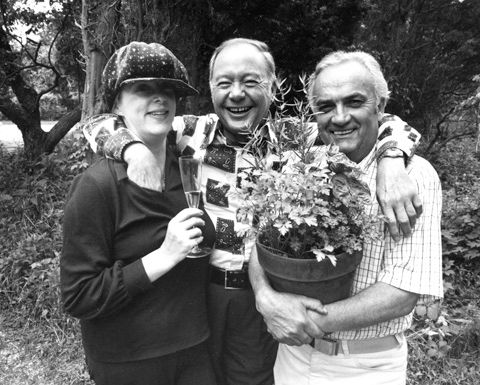
One of the pleasures of summer in the Hamptons was getting to know Craig Claiborne and Pierre Franey.
To me, the Times restaurant critic Craig Claiborne was a god. I persuaded Clay to agree to Craig’s rules of restaurant reviewing: Be anonymous. Always pay. To render a judgment would require a minimum of three tasting meals with friends, I warned him.
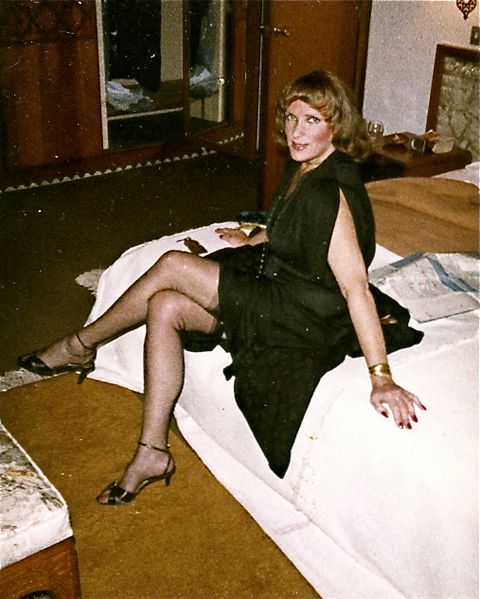
Being the restaurant critic for New York got me extra attention when I published a book.
My life was about to become very rich. To start dinner with a half bottle of white. To drink a great red Burgundy that might cost an exorbitant $12 then, and take my friends to dinner on someone else’s dime…I had never imagined it or longed for it, but here I was the anonymous Mrs. Forst according to my credit card, long before the internet unleashed nations of self-appointed restaurant critics.
***
November 25, 1968
The Quintessential Soulé Food
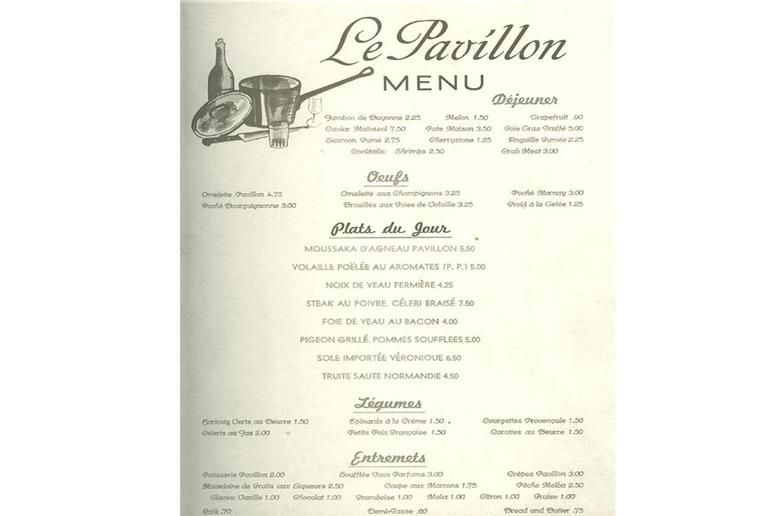
A menu from Le Pavillon.
Henri Soulé was the headmaster of America's prep school in haute cuisine, the fabled Le Pavillon. Two generations of expatriate Frenchmen -- captains, waiters and sauciers -- did advanced studies in arrogance, ambiance, and aspic with the mercurial master, then went on to stud the side streets of Manhattan with Pavillon offshoots: La Caravelle, La Grenouille, Lafayette, Le Mistral, and more. Only one descendent was directly blessed. That was La Côte Basque. It was his own, his 55th Street "philanthropy," "Le Pavillon pour les Pauvres.” For the poor.
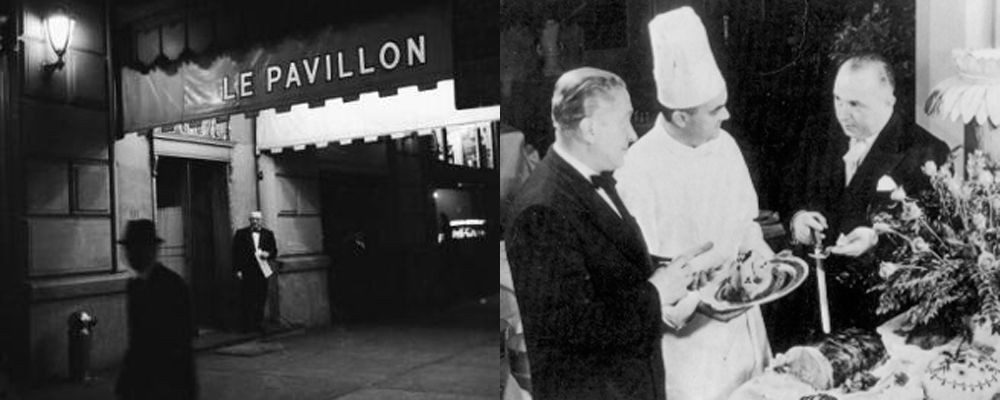
Hoping Eater won’t be upset I borrowed their photo of Henri Soule. That looks like Pierre Franey in the middle.
In circles where eating is an art, an obsession, a sublimation and a status game, Soulé was the recognized master. It was only after he died that another dimension was revealed; Henri Soulé the lover. A fat man with pasty face, owl eyes, unnatural grace, this romantic hero! Many had assumed, and some had written, that the ubiquitous Mme. Henriette silently toting l'addition at the Pavillon cashbox was Mme. Soulé. Mais non. Now, from the darker shores of Bayonne, France, came the wife who had refused to suffer la vie Manhattan. She came to claim her inheritance. Le Pavillon went to the highest bidders. But sentiment was served with the purchase of La Côte Basque by Henriette. "I wish to keep the name of Henri alive," she said.
Only she is permitted to invoke the magic of the Soulé name. It is there on the canopy, misspelled. The Pavillon spirit is there too. Not merely in the cellar with its half share of the Soulé wine hoard. Not only in the food which can rise to Pavillon hautesse. It is in the air. Electricity. Drama. A tension, as if something special were about to happen, not just another dreary duck in orange sauce, but the original duck in the quintessential orange sauce.
You are seated at once. You are not required to paper the bar with green for a prescribed period before earning a table. There is a table. It is yours. You need not fear that the unexpected arrival of Rudi Nureyev or Charles Revson will usurp your table. Silly. Charles Revson wouldn't be caught dead at that table.
Ay, there's the rub. La Côte Basque will put you in your place. It may be disheartening to be reminded of who you are and worse, who you are not. You are not Pat Lawford. You are not Bill Blass. You are definitely not Sol Hurok, nor, ha, the Duchess or Windsor.

Photographer Dan Wynn took the photo that I used to protect my anonymity.
Henri Soulé did not invent the tyranny of the fine French restaurant. But he was a virtuoso of the tyrannical style. He knew only too well that should Eugenia Sheppard look up from her cold striped bass and fail to see 22 familiar faces -- never mind the fabled glory of your sauce gribiche -- that she might get an itchy feeling she'd wandered into the wrong restaurant. So crucial to survival is snob-seating protocol that an extra table will be lugged from out back and set up in an aisle to accommodate somebody really momentous, somebody like Amanda Burden.
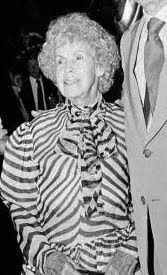
Fashion-writer and widely syndicated columnist Eugenia Sheppard wrote for the Herald-Tribune.
There is no Larousse Guide to Table Status either. Nor is there any logic to the game. Some of the most pleasant tables are tucked into Siberia, while the pets in status row get numbed by traffic, buffeted by dessert carts or whipped by passing sables. Click here to read the original review.
***
May 19, 1969
La Caravelle: Insult á La Carte
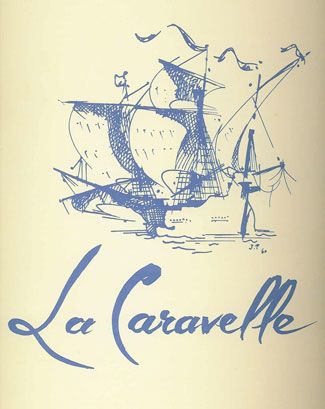
I would pretend to study the menu while watching the drama at La Caravelle.
Someday a gourmand anthropologist will do a thesis on the Manhattan culture's painful rites of passage. It will be called, "Coming of Age on West 55th Street: or, How the Ambitious Adolescent Attains Manhattan Manhood by Braving the Elegant Cruelty of Fashionable French Restaurant Snobisme."
Oh, sure, you can be a steakhouse snob and never starve. You can be king of the clan at your local chop-suey boite. You can swing your weight around among the potato latkes at Ratner's. But your tribal standing soars the day you can crack a genuine welcome in the great stone faces that guard the door of La Caravelle.
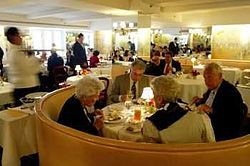
I was nobody at La Caravelle, seated in the farthest shadows on the back room. If only they knew…
A few are born to snobisme…sipping milk from Baccarat crystal at Le Pavillon during holidays from Choate…or teething on the flatware at "21”. But for the rest of us -- expatriates from the provinces, escapees from Erasmus High and Gary, Indiana -- there is the exquisite torture, the terror of the unknown. Why do we endure it? Why do we pursue it? Why do we perform these daily exercises in masochism? Rejection must be some kind of basic human need. The French are masters of the fine art. And New Yorkers are the quintessent victims.

André and Rita Jammet were La Caravelle’s last owners. She now bottles and sells La Caravelle champagne.
New York is a mecca for masochists. It is the Atlantis of our masochist fantasies. How could we live anywhere else? We thrive on discomfort, frustration and scorn. Clammy with fear (and hope) of anticipated rejection, we phone La Caravelle to reserve a table. Preferably a day in advance. Or, aggressively, under a borrowed title: A table at one o'clock for the Princess Kiki de Guinzberg. Not that such tactics always work. Friends, unknown to the house, who phoned Thursday for Saturday lunch were sternly informed: "We don't know if we will have a table on Saturday."
"If we didn't keep half, even three-quarters of the dining room for our people (…the people who made us) we'd be stupid," Caravelle co-owner Robert Meyzen has said. "I don't care if you call three weeks ahead. When I can have Mrs. Lytle Hull and Mrs. Burden, why should I take Mrs. Somebody from Kalamazoo?" Click here to read the original review.
***
September 22, 1969
Café Chauveron as Love Object
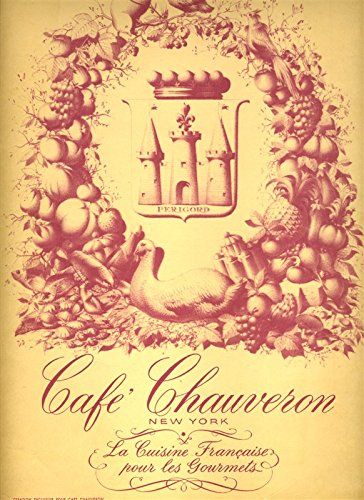
I mourned when Roger Chauveron closed his doors on 53rd Street and moved the restaurant to Florida.
Café Chauveron has long been the love object of my unadulterated great food passion. Great food alone, isolated from chic, ego indulgence, pampering or sophisticated sadism. There isn’t a fashionable bone in the house. Oh, yes, I used to see Mainbocher there often. But Mainbocher is history, not fashion. The great shriek of chic so faithfully recorded by Women’s Wear Daily doesn’t echo on the mongrel block of 53rd Street east of motley Lexington. Café Chauveron draws solid merchants of commerce and culture, scatterings of tacky twosomes, refugees from the provinces (Brooklyn, Lubbock, Flint) hungry for haute cuisine uncurdled by haute snobisme.??
The room is unabashedly dowdy. Guardian gladiolas glower funereally in the corners. Ersatz leather banquettes line the bland afterthought of champagne-flocked walls. Even the tortures inflicted here are unfashionable. None of that cliché autocracy that feeds our innate pleasure in pain at the arrogant La’s: Côte Basque, Caravelle, Grenouille, Lafayette. Chauveron’s thorns are the prick of democracy. The house simply cannot say no. Reservations are accepted with absolutely no correlation to the possibility of a vacant table. On a busy night, a 45-minute wait is possible. Standees are invited to make time fly at the bar. Time flies there profitably for the cash register. But no one will wither or scold you if you prefer to wait dry, palate un-stimulated for anticipated joys.
With my chronic (but not debilitating) Puritan hangover, I feel rather decadent waxing lyrical over mere food. And lapsing into sexual metaphor seems sacrilegious. But I have had more than a dozen meals at Cafe Chauveron that justified both decadence and sacrilege. Great sensuous feasts to stagger home from, giggling, pleased with the sheer brilliance of having chosen so well.
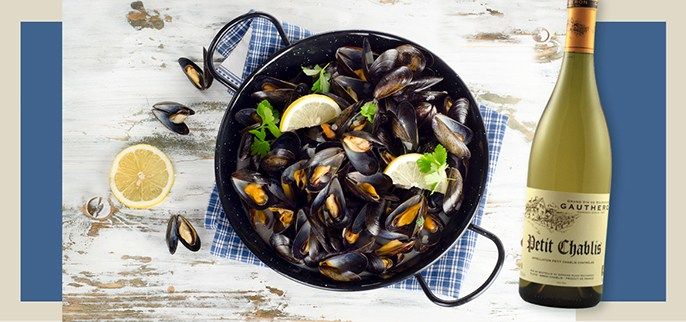
Chauveron’s moules were buried in a sublime Chablis sauce enriched with whipped cream.
Les moules au Chablis glacées, mussels buried in a sublime wine sauce enriched with whipped cream, then glazed under the salamander. Tender, pink-fleshed rack of lamb with primeurs, infant vegetables tasting as if they’d been grown in butter. And then a great voluptuousness of chocolate, the Chauveron mousse -- the Sophia Loren of mousses -- gutsy, not the least bit subtle, wrapped in a thin sponge-cake package, served with a whipped-cream-fluffed sabayon sauce and -- holy gluttony! -- moist almond-scented macaroons. Fresh strong café filtre. Measure that climax, Dr. Masters! Click here to read the original review.
***
November 10, 1969
Playing the Celebrity Lunch Game

The fashion world got full coverage at La Grenouille because Women’s Wear’s John Fairchild was a regular.
“I don’t care who they are,” pooh-poohed M. Jacques Tiffeau, leering cozily at the dazzling frozen-in-silicone blonde two banquettes south.
“You look so well, Jacques.” The blonde beamed, a radiance of pampered epidermis. “I saw your picture ---"
“The one in Screw,” deadpanned Jacques.
“The one where you had your clothes on,” she purred. “You look so well.”
Who is that?
“Hmmm...What’s her name, rich lady...I don’t give a ---- who they are. Hello. Hello. Hello.” Crocodile smile. Tiffeau le Sauvage, Seventh Avenue’s prophetic and dogmatic frockmacher, speeds a sardonic ax-murderer’s smile across the room to the industry’s Dowager Queen of Flack, Eleanor Lambert. “Oh, you are in luck. Here comes what’s her name. That rich old lady.... Woodward. Woolworth. The shaky one. Oh, today you have the cream of the cream. You see that old movie star... now she does the Compoz commercial. And well... look who is sitting with John Fairchild. Monsieur Cardin. And Mme. Alphand. Don’t you think she looks like a manicurist?”
Mais certainement. Within the erratic permissiveness of the Internal Revenue Code, M. Tiffeau may regard La Grenouille as his little boardinghouse lunch spa. But the once (so briefly) tranquil pension has become the undisputed clubhouse of the Seventh Avenue Mafia, their society molls and haute chumming pols. Publisher Fairchild recalls Rockefeller, Nixon and Bobby Kennedy lunching one noon at strategically separate tables far from their usual knish-calzone circuit. “The front room of Restaurant X is getting to resemble the throne room of the Byzantine court,” the EYE of Women’s Wear Daily remarked recently. “Only the jugglers are missing.”
WWD keeps a firm clawhold on its prestige lily pad at La Grenouille (obliquely, “the frogpond,”), documenting the Byzantine soap opera, now worshipful, now petulant, now shrilly irreverent, scolding the dowagers “in their safe little dresses, anchored with safe little status pins,” fanning the flames of revolution against all restaurant pants barriers, sniping at the bear-huntress Carol de Portage in her black vinyl and jewels, documenting the precious excesses of Lulu de la “Brillo hair” and the Vicomte de Rosiere, EYED patting his wife “affectionately on the South Forty.”
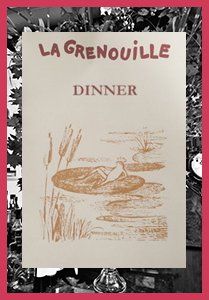
Dinner at the Frog Pond was dignified and calm compared to the drama of lunch.
Here is Tony Snowdon munching raw hamburger...Luis Estevez, who “knits his own suits on rainy evenings”... the Rainiers at separate tables, Grace calling across the room that homey lament: “I ran out of money”...a certain determined lady designer demanding a table closer to the Duchess of Windsor...that memorable Saturday Babe Paley and her Ba had the imagination to lunch with their very own husbands...Clifton Daniel “apparently assigned to wooing the advertisers.” Ethel, Merle, Lyn and Estee, and all the dauphins of Seventh Avenue.
And who has been banished to the Catsup Room? Siberia. Mercilessly, WWD names names. From the great heartland of Out, we sip our vintage tomato juice and devour sweet assassination. “The only people who will object to a table in the Catsup Room are still climbing,” owner Charles Masson observes. Of course, two Catsup exilings in a row could shake anyone’s confidence. M. Masson once put two African-Americans he didn’t know from Adam Clayton Powell at a highly strategic banquette...just to prove that the rules of the status game get reinvented every day. Click here to read the original review.
***
March 22, 1970
Lafayette, We Are Leaving!
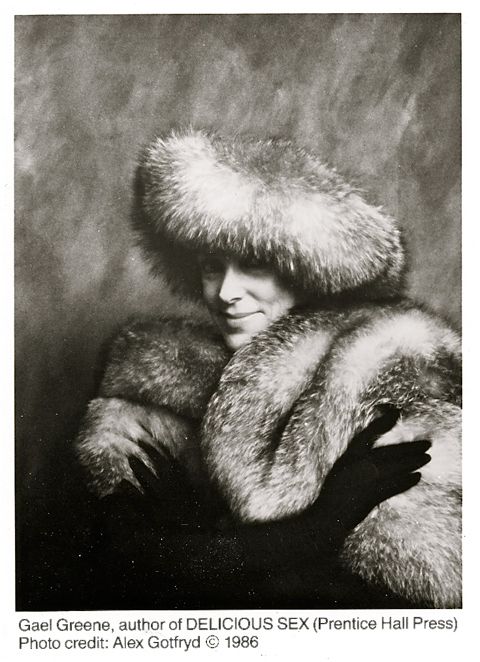
The Fayets at Lafeyette were so fussy, they would have barred me in this hat. Photo by Alex Gottfried.
Bravo Lafayette Restaurant! Here in this wee cramped masonry fortress at 202 East 50th Street, hauteur has been elevated to unsurpassed superciliousness. In a town where snob, snoot and snub flower in perpetual renaissance, Lafayette is the “most.” Here the spleen is infinitely more memorable than the sweetbreads.
It is true that Jean (Tartuffe) Fayet and his falsettoed Mme. Defarge, the solid Jacqueline, did not crown themselves holier-than-thou out of sheer megalomania. They trained with the late beloved tyrant, Henri Soulé, maître de snob both malignant and benign. Jacqueline tended Le Pavillon’s cash register for two decades, and Jean, first a saucier, started as a waiter and ascended to captain before a power struggle forced his embattled exit. But, as one Pavillon alumnus observed sadly, a Soulé temper without the Soulé charm is insufferable. “Jean Fayet has the head without the heart.”
In less than five years, the apocrypha of insult at Lafayette has waxed fat. Classic snobisme is not the point here: name pedigree or celebrity clout means nothing. The Fayets have their own subjective rules of elegance and Almanach de Gotha. A longhaired scion of the French banking Rothschilds was refused his table on esthetic grounds. Beauty editor Amy Greene was banished for her thigh-baring Pucci while the ABC executive who chivalrously protested, “I don’t think her skirt’s too short,” got his check torn in two and an invitation never to return.
Alfred Knopf Sr. wanted coffee with his entrée. Absolument, non…came with a dissertation on the gaucheries of coffee prematurely served. Conde Nast publisher S.I. Newhouse asked for iced coffee. Such sacrilege -- for, as he was informed, “You have just had the best lunch in New York.” Washington attorney Stephen Spingarn was required to remove his Humphrey-Muskie button and to check a plastic tote bag containing what he said were confidential political papers. He refused and was not seated. A Lindsay loyalist got debuttoned. She stayed.
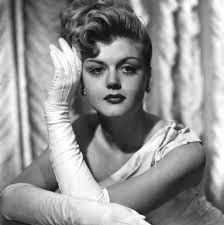
Angela Lansbury was told there would be no check and please never to return to Lafayette.
Italian couturier Valentino was turned away in turtleneck. A sartorial elegant in blazer, tartan trews, white shirt and riding stock was halted at the door: “Are you riding now?” Angela Lansbury was asked to shed her shades. She propped them atop her head. That didn’t suit either … so inelegant the reflections on the ceiling. Obediently she placed them on the table. But then her companion asked for coffee, although Miss Lansbury was still nibbling at salad.
The impropriety of this request was pointed out. But there was a plane to catch, Miss Lansbury explained, cajoling. She lingered over coffee after her companion had fled, and when she asked for the check, was informed that there was none and the house would appreciate it if she never returned. Click here to read the original article.
More BITES You Might Savor...
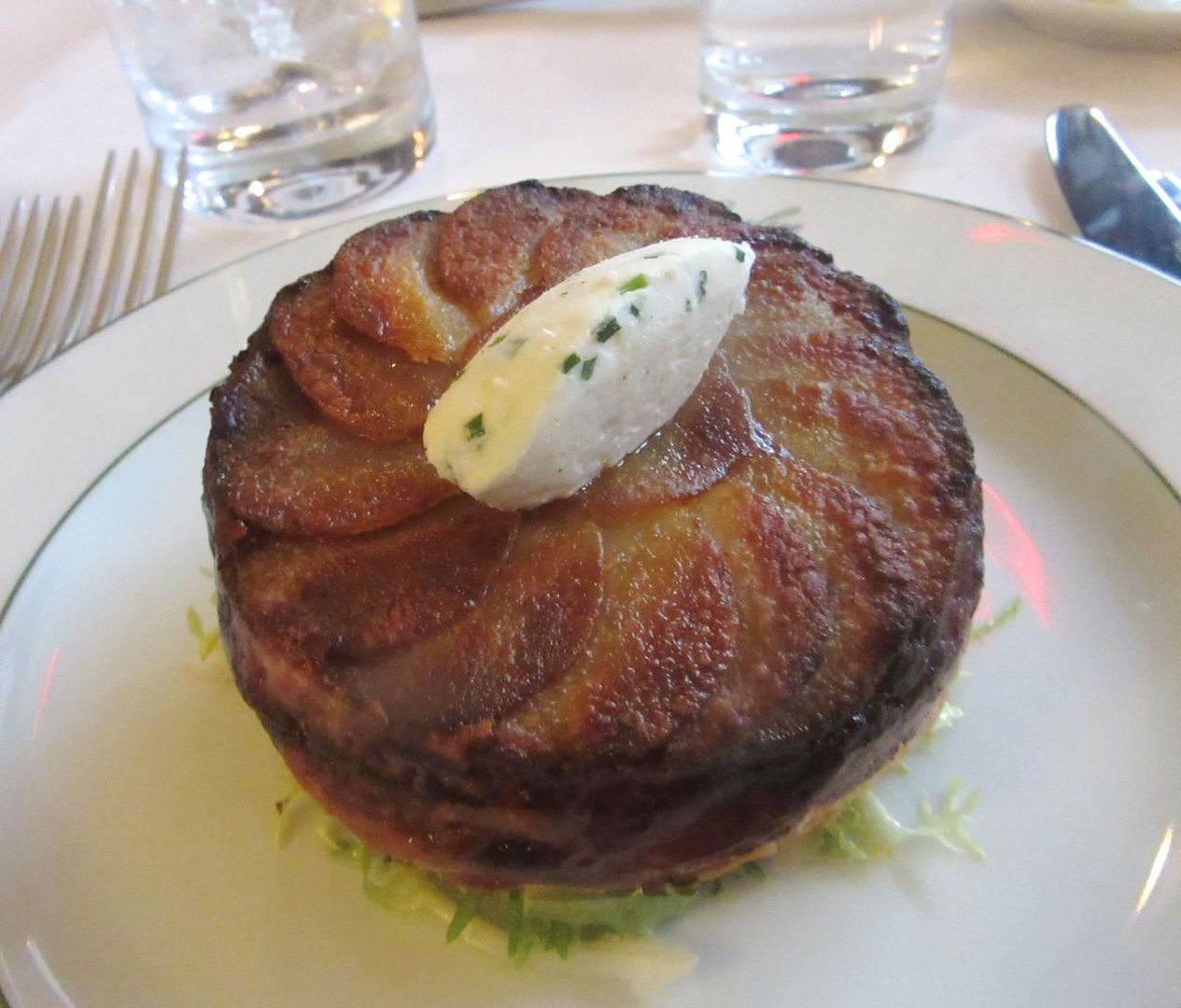


Best Bites 2018 Atelier Robuchon The Modern